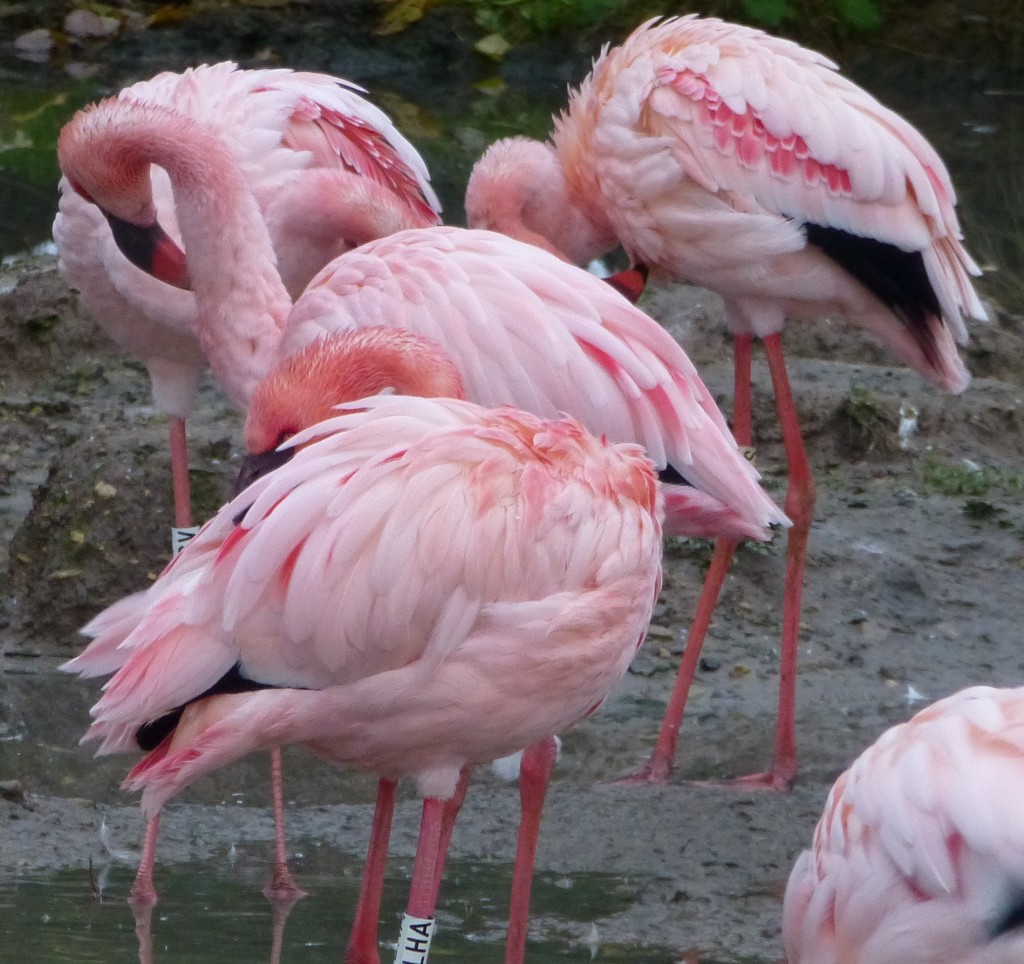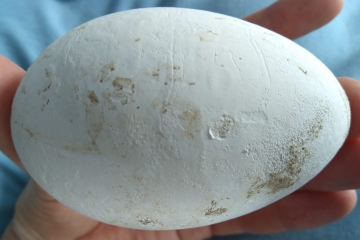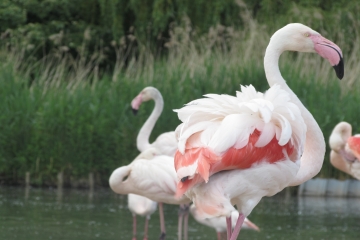The legend of the fire bird.
It's a quiet time of the year for flamingo behaviour. Flocks are generally not in the mood for courting (although several head-flagging Caribbeans prove me wrong on this score) and the chilly weather means that flamingos may limit their activity somewhat. So I thought I would think of some non-behavioural, "facts about flamingos" posts to fill the time between now and the coming of spring. So here goes. I hope you enjoy!
This post mainly focuses on those very special, very important lesser flamingos. Little pink gems that live alongside of their taller, louder, paler cousins near Flamingo Lagoon. I have been amazed by how bright these guys have turned over the past few weeks and their lovely long, scarlet scapular feathers (the ones over the backs of their wings) are really quite pretty. The weird breeding habits of the lesser flamingo, the hot and dusty environment that it lives in, and its vivid fiery plumage help give rise to the legend of the Phoenix. The mythical firebird that is re-born out of the ashes of its own demise.
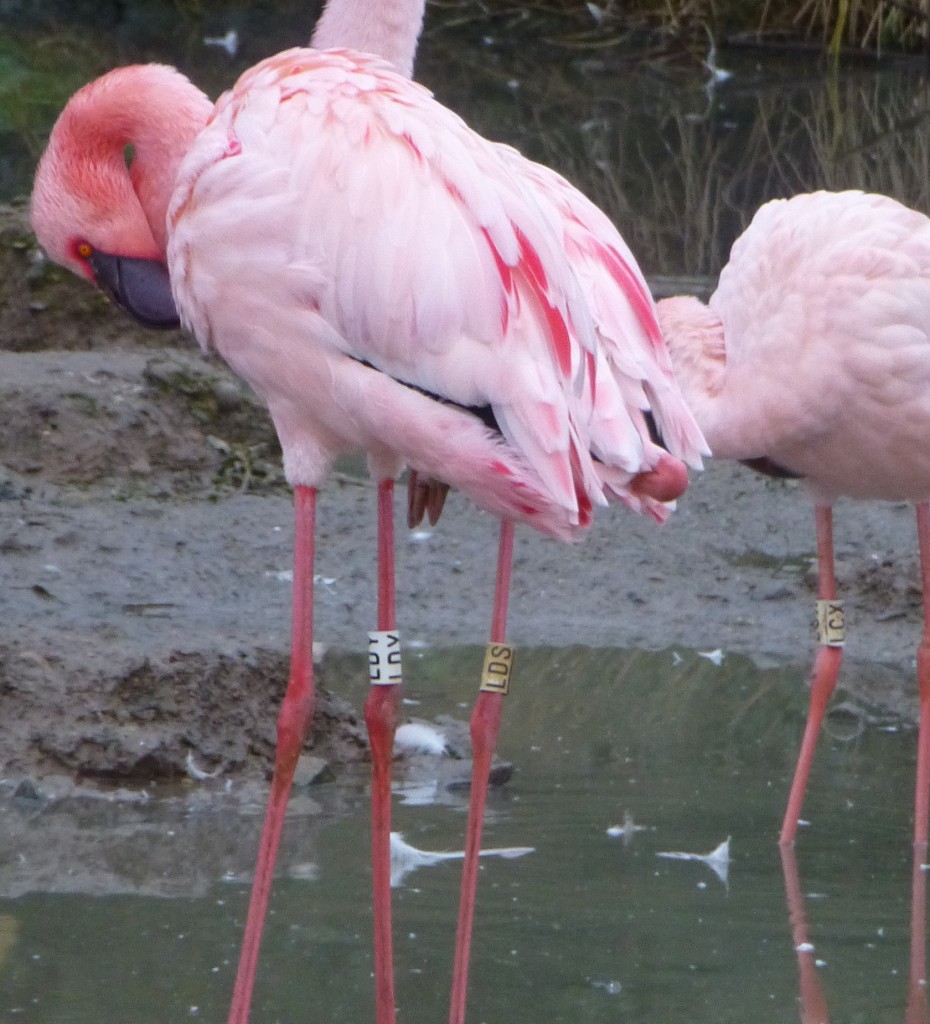
The wild habitats of the lesser flamingo are caustic soda lakes and during the dry season these lakes can shrink and dry up, leaving a hot, dusty, barren environment where no life could thrive. However, past explorers, local people and those lucky enough to explore the African continent "back in the day" noted that out of the clouds of dust from the dry lakes appeared hundreds and thousands of lesser flamingo chicks, marching in the direction of fresh water and more hospitable feeding grounds. And so the idea that the flamingos were created from the heat and fire of the dry season, in a similar fashion to the Phoenix, was born.
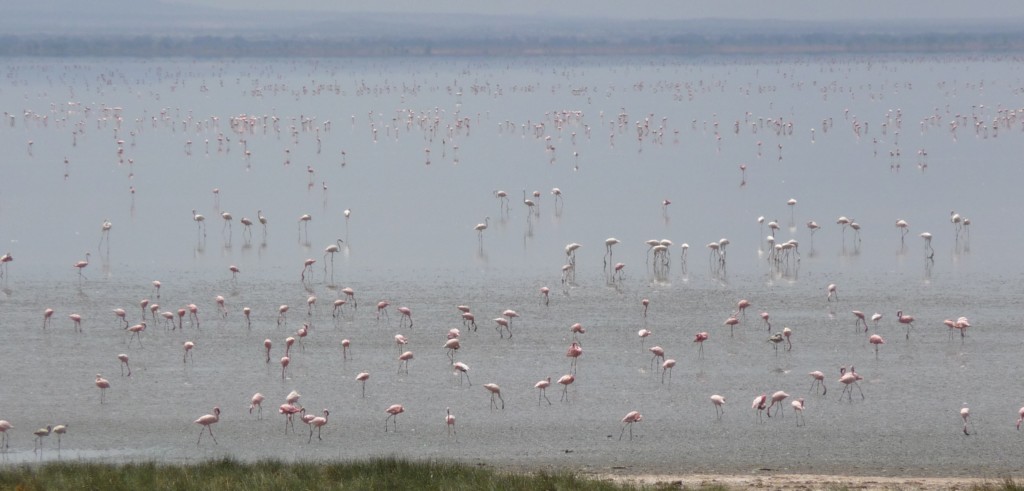
What biologists can now tell you is that what was being seen was the movement of chicks from their nesting grounds right out in the middle of the lake, way beyond the naked eye and often concealed by the heat haze, to areas of feeding, drinking and safety. The "father" of modern flamingo science (if that is even a branch of science... we'll say it is!) was a chap called Leslie Brown whose book "The Mystery of the Flamingos" documents his journey to East Africa in search of the breeding grounds of the lesser flamingo and his realisation of the harsh environment that these birds choose to live in. It's well worth a read.
It is nice to think that the flamingos might, in some, way be mythical. They are certainly long-lived and enigmatic enough! But alas, they are not born out of the fires of Africa's Rift Valley. They simply make their home there, in an environment that is not exploited by any other species. However, the Phoenix does make an appearance in the scientific name of all the flamingos, Phoenicopteridae, nodding towards the idea that these are the original fire birds.
Do be sure to check out the flock of lesser flamingos on your next visit to WWT Slimbridge. They are really very cool little animals and deserving of a second look.
